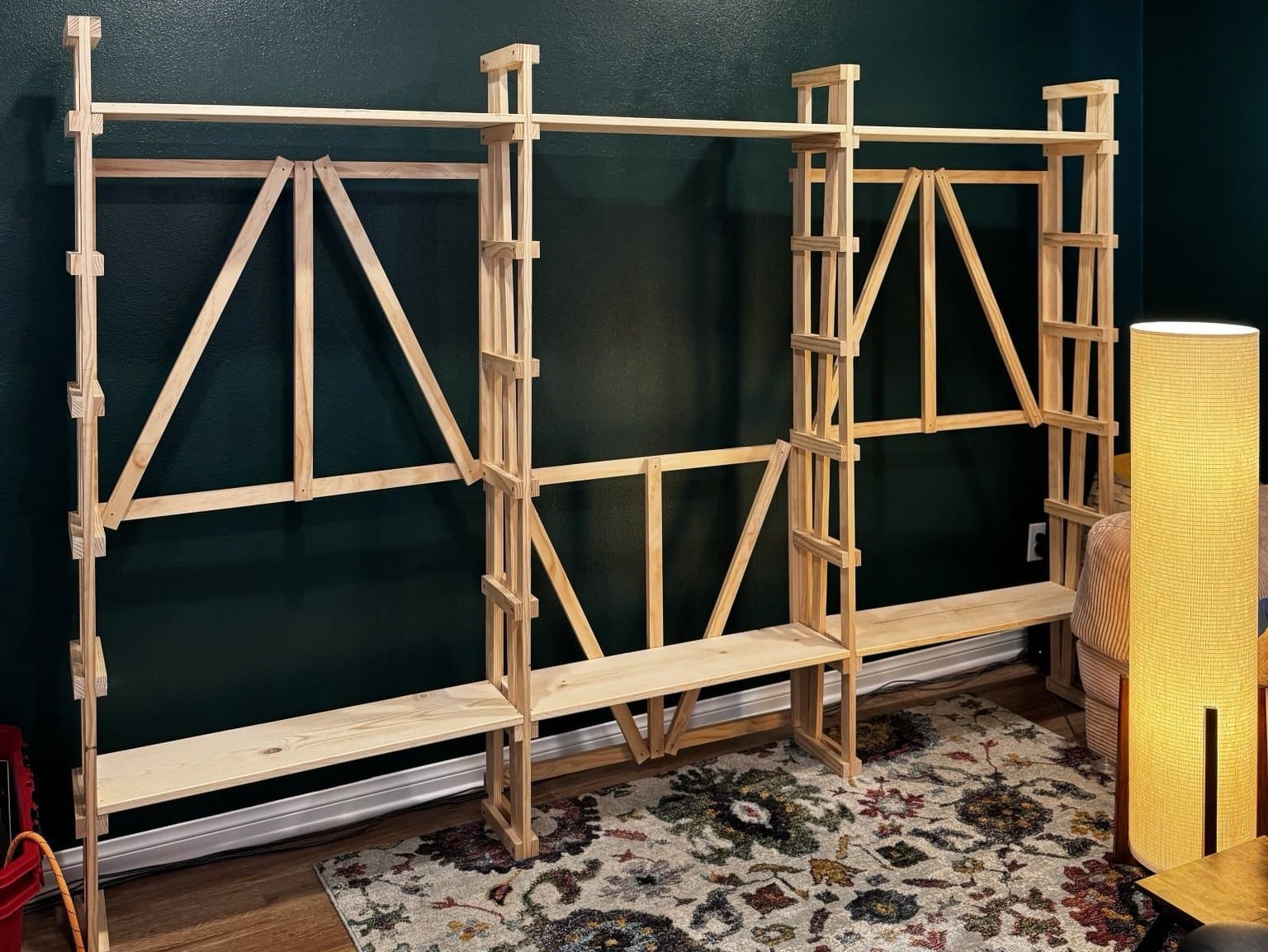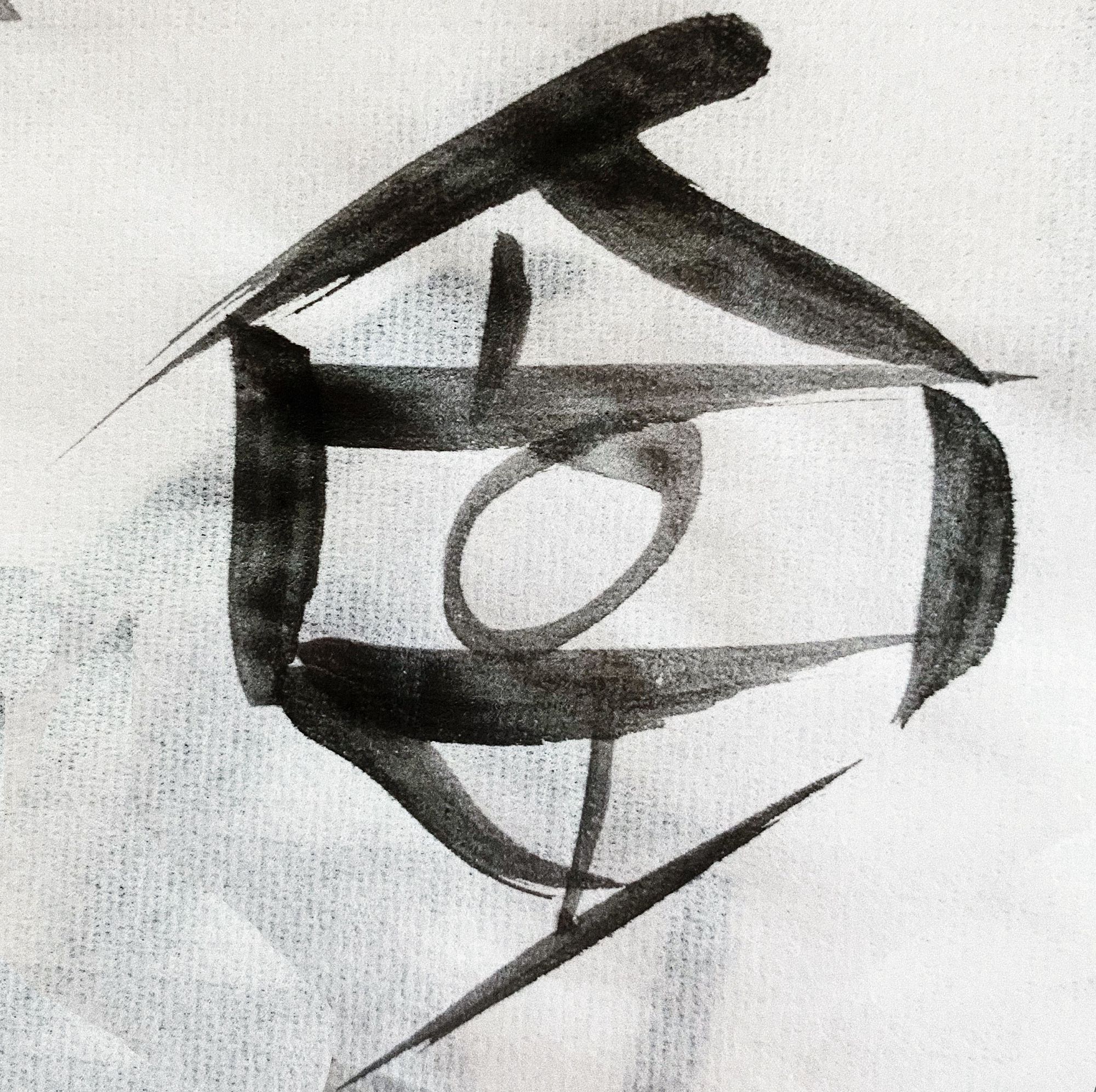Do It Yourself
I have moved three times in the last year. From New York to California. From a friend's house situated in a mountain valley to a condo in Los Angeles. From that condo off of a too busy street to a small house in a quiet neighborhood that no one else in the city seems to have heard of.
With each move I found myself shedding objects. Books, gifts I didn't want, furniture I bought, furniture I made, art that no longer suited. I gave them away to friends. I sold them over the internet which mostly involved people trying to scam me. Donated to various charity shops after having to do too much research on which ones were actually helping people.
Many of these pieces I loved once. Because they were beautiful or because they were useful or because they fit a purpose in my life. Many were reminders of people I don't talk to any more. But that's okay. Tastes change. Needs change. People change.
Now, I need a lot of furniture. I have enough to be functional. A coffee table I built in my ramshackle shop in a warehouse in the industrial part of Red Hook. I'm proud of the design if not the execution. An old desk I built in a day serves as a dining table. It's too small – barely big enough for me and my partner to sit together comfortably. We mostly just use it for Gloomhaven. When guests come, we have to go to the long picnic table outside. It's southern California, so it's nice out there – a riot of colors from the bougainvillea and passion vines. But climate change has also brought mosquitos, so maybe a place to eat inside would be nice.
The thing I'm missing most is bookshelves. All my books – ones I've had since I was a kid, books I worked on, ones that made me the person I am today. Books I'll never read again but can't bear to part with. The ones kept just out of sight because they still mean something to me even though the writers who created them turned out to be terrible people. The ones that make me question if I can or if I even should separate art from the artist. And then all the ones for my many interests and hobbies: cookbooks, woodworking, photography, rpg sourcebooks. All of the things that say: someone who reads lives here. Someone who cares about story. Someone who cares about how the world works and what makes a person a person.
It's possible to like those things, to care about those things, without being a reader. But that's not the life I've lived. Books, unsurprisingly, have always been the central pillar of my life. And perhaps I've attached too much meaning to them. Attached too much of a sense of self to them. Used them as a signifier to tell people who I am. A substitute for having a personality. A marker of a kind of tribal affiliation.
Anyhow. Books. I'd like to have them where I can reach them. Where I can see them and remember the good work I've done. Where I can grab a recipe, look up a technique. Reconnect with people I've been and contemplate who I could become.
I have a woodshop. I share it with a dear friend, a collaborator and a colleague. They have a lot of stuff and I don't, so I'm very grateful for this setup. Because I shed so much when I moved, my part of the shop is only half-set up. Full of borrowed tools, cabinets and an oddly shaped and sized workbench left behind by the previous tenant. It has one clamp and a Formica top for some reason and a weird lip on the back so I can't put anything big on it. Sawhorses and scrap wood make up a work table. More than most people have, sure, but not enough to build fine furniture. To take rough hardwood lumber to something ready for careful joinery, and a mirror shine finish.
There's a guy. An artist, a furniture maker, a theorist. A communist and an anarchist. His name is Enzo Mari and he passed a few years ago. Before he did, he made a great deal of art and designed a great deal of furniture. But one part of his legacy, at least the part that brought him to my attention, is a book of designs he left that he titled Autoprogettazione? The question mark is part of the title. It kinda sorta translates to "self-designed" but the interrogation always struck me as important.
The idea behind the project is that furniture should be accessible to everyone. Not just purchasing it, but making it. Building furniture should be as cheap and nearly as convenient as buying it. It should be as accessible as owning a hammer and a saw and the budget for construction lumber. As cheap and as easy as going to the big blue warehouse and buying something made of cardboard and sawdust but a thousand times more durable. Mari's idea is that the producing of the thing should be as important as the use of the thing.
Do it yourself. An empty phrase repeated so often it has become divorced from its own meaning. Used by HGTV and a million TikTokers and YouTubers every day to signify a kind of aspirational lifestyle. But it means something so important. We can make things and we can do hard things. I came into myself in my first years of college, my first awakening to the possibilities of who I could be by falling into a music scene that believed, at its core, that doing it yourself was the most important thing there was.
The more I sit with it, the more I realize how important this principle is to me. A kind of anarchism that says if we make the thing, we don't have to be beholden to the systems that insist we live our lives a certain way. That demand we have a credit card so we can have a credit score so we can have a roof over our heads. That say furniture should be disposable. That fashion should be fast. I try to make a practice of making things. To remind myself that this is, in some small way, an act that matters. One that exists in defiance of systems that want my dependence, my reliance on what only they can provide me. And more than that, making useful objects reaches beyond my own needs, my own house.
A friend texted me over the summer with a photo of a cutting board I made. It was a spare one, one I hadn't thought about in years but found in a crate when I was unpacking. I gave it to my friend, casually. "Here, take this. Get it out of my house." And they sanded it and oiled it and brought it with them when they spent the summer in a dorm room in another city, away from their loved ones, surrounded by students half their age. And they sent me this photo and said they were using it to feed their classmates. They were using it to feed themselves. And it brought them joy to do it.
In making we construct a community. We fill needs. We provide support. A spoon, a shelf, a desk, a kitchen island, spice racks, several spoons, a dining table, a workbench. All of these objects live on, some of them failing, some of them still providing utility. Some of them are beautiful but most of them are not. But they are in houses that are not mine. They are with people that are bonded to me through use and care and memory.
And so I started with shelves. It's been over a year since I built anything real. Closer to two. I started by laying out one by twos, construction grade yellow pine, in a lattice. Screwed them together with a diagonal brace for support. Cut the pieces on a chop saw I bought since I gave away the one I had back in New York that had a fence off by one degree, the one that was slowly driving me mad cut by cut. Maybe a new tool will make me a better furniture maker.
I built a set of braces for the backs. They looked like timber framing, the kind that holds up roofs and braces studs behind drywall. I cut warped 1x12s into the right length for shelves and nailed them down to the frame to make them flat. I brought the pieces home. Screwed them together with decking screws I found in a bin still wrapped in the mover's plastic with a blue tape label on it that said "Stickin stuff to other stuff." Sure, past me. That was actually helpful.
And I while I did all that I thought about Enzo Mari and I thought about the principles of Autoprogettazione. I thought about Christopher Schwarz and his Anarchist's Toolbox. And I thought about the purpose of art and of story.

Making things that are useful and beautiful doesn't require a fancy education. You don't need the perfect tools. You don't need the perfect materials. You need perspective and a goal. You need a why, but not a how. The how comes from the doing. The how comes from practice.
And the only way to practice is by doing. I spend a lot of time contemplating the approach. The systems I need in place before I can work. The desire for a perfect plan to execute the perfect result. I forget, too often, that simply doing the thing – flawed but finished – is what will lead me to my goals. Intention matters but only when paired with action.
A saw. Some screws. A pile of pre-cut lumber. That's all it took. I have shelves again. They're simple but they're beautiful. They hold my books and my blu-rays and my games. Things that matter to me that remind me of who I have chosen to be. A way I can remember that I live in community. I am connected to the people I care about. Elegant, lightweight, surprisingly sturdy. The design is good. Autoprogettazione. Did it myself.
